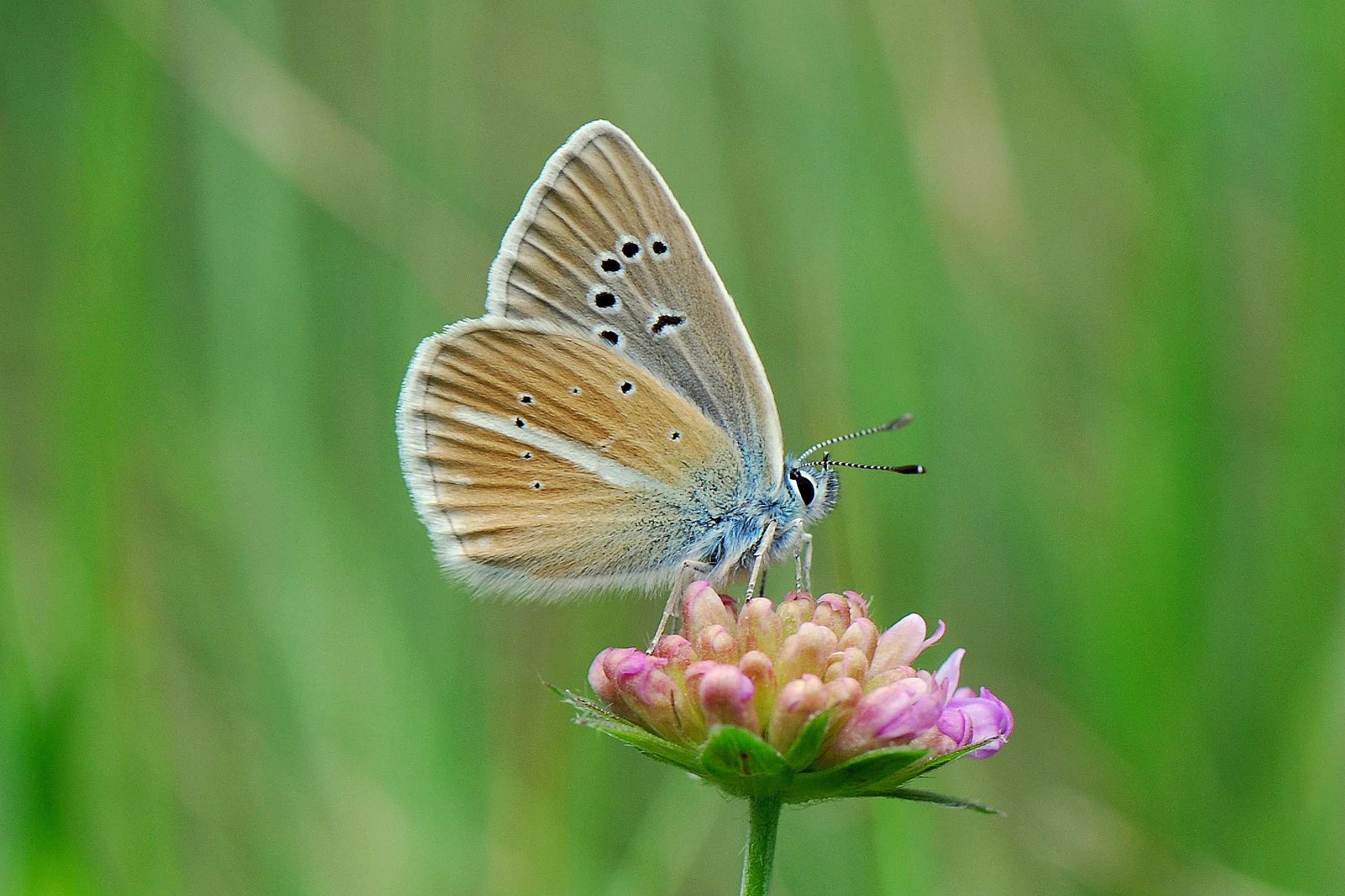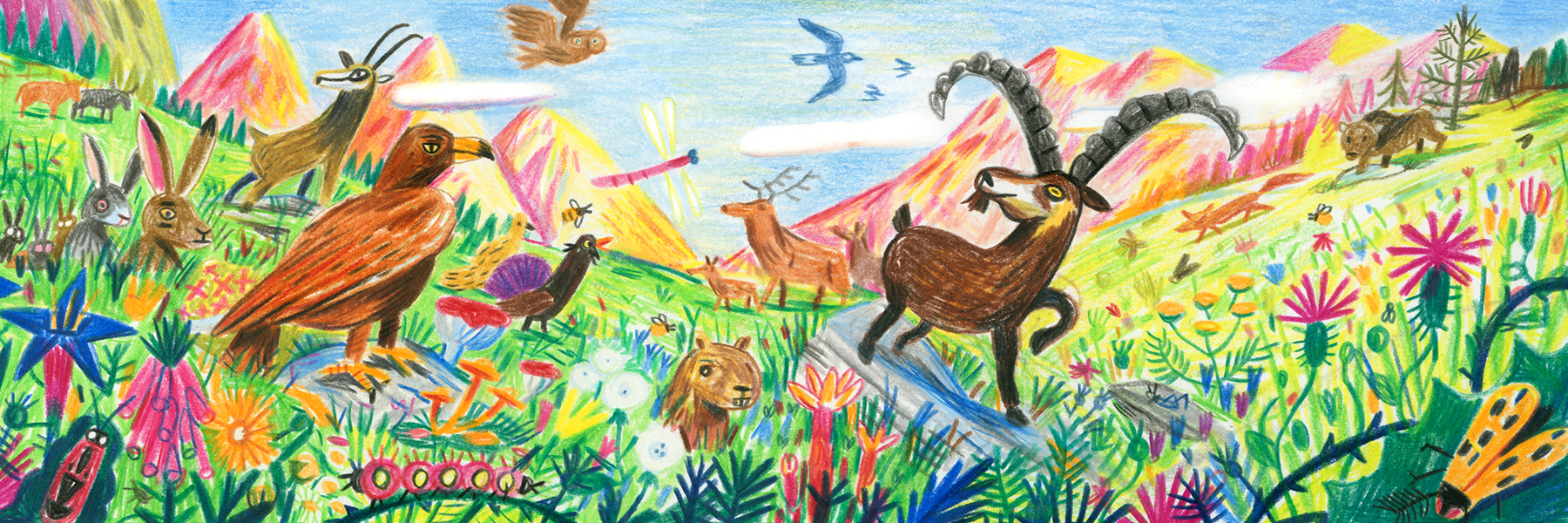
Alpine species struggle to keep pace with climate crisis

As the planet heats up, species are shifting. In the Alps, plants, insects, birds and trees are adapting and moving upwards but not quick enough, new research shows.
In the Swiss Alps, the average temperature has increased by 1.8 degrees Celsius (35.2 degrees Fahrenheit) since 1970. To survive hotter conditions, many Alpine species are forced to seek cooler, higher mountain regions.
A team of European scientists, led by the Swiss Federal Institute for Forest, Snow and Landscape Research WSL, has taken a closer look at this phenomenon. It recently published a comprehensive review of the seasonal changes and movements of over 2,000 species of plants, animals and fungi in the Alps over the past 50 years.
“The fact that many species are moving up to higher altitudes is basically good news, because at least they are trying to adapt,” explains Yann Vitasse, a specialist in forest ecology at WSL.

“But most species do not manage to climb the necessary 60 to 70 metres of altitude per decade that they would have to overcome in order to continue living under their ancestral climatic conditions.”
The scientists found that over the past 50 years, plants, animals and fungi shifted elevation by an average of 18-25m of altitude each decade but with substantial differences per group of species.
The only way is up
Land-dwelling insects, butterflies, coleopterans and reptiles coped best with the changing temperatures and moved the furthest, the researchers found (see chart below). Land-dwelling insects shifted up to 90m of altitude per decade, while reptiles moved 63m during the same period.
Those that moved the least were semi-aquatic insects and amphibians like frogs, whose environments are generally marshes, rivers and lakes.

Trees and shrubs also move to higher altitudes in short time periods (up to 33m).
“This was quite surprising as trees have quite long lifespans to reproduce. We thought it took quite a long time for them to settle in new locations. But in the end we see that they have moved quite fast and settled much higher up,” says Vitasse.
But it is still not enough to keep pace with climate change. For other groups such as birds, ferns or wood-decaying fungi, a much slower upward trend has been seen – less than 15m of elevation per decade.
“Some birds also manage to move upwards in altitude, especially to their upper elevational limit. The distance they migrate depends on the species’ mobility, their habitat and their microclimate,” says Vitasse.
“I was surprised that species managed to migrate this quickly even if they are much slower than climate change,” the WSL scientist commented. “Today, if you want to find the same climate in the Alps as in 1970, you have to climb 300 metres in altitude. This is all very fast for animals that have evolved over thousands of years in cooler climatic conditions.”

More
The Swiss Alps are beautiful, but are they biodiverse?
Spring has sprung
The most visible signs of the Alps getting hotter are probably Switzerland’s melting glaciers. Since 1850, Alpine glacier mass has decreased by about 60%; the melting has accelerated in recent years.
Higher temperatures result in earlier snowmelt in the mountains and earlier vegetation, and increasingly warmer spring days that may upset the balance of flora and fauna.
The team of researchers found that plants, reptiles, migratory birds and land-dwelling insects such as butterflies or grasshoppers have responded by bringing forward their springtime activities – such as plant flowering – by an average of 2-8 days per decade. The consequence of this was seen this spring in canton Valais when early frosts and early blooming of apricot and other fruit trees wrecked harvests.

For other creatures such as birds, amphibians and semi-aquatic insects (especially dragonflies), the researchers found no or only minor temporal shifts in their spring activities.
Out of synch
For the WSL researcher these big differences between species is problematic: “This development could lead to the different species no longer being able to coordinate their activities with each other chronologically, which is threatening for the long-term survival of the species as part of an ecosystem.”
He uses the example of a caterpillar that needs to emerge at the right moment to eat fresh leaves from an oak tree.
He explains: “If the caterpillar appears late compared to the production of leaves, the leaves will have already produced tannin or other chemical defences to prevent the caterpillar from eating them. Then, if there are fewer caterpillars it may have an impact on the vitality of bird offspring. Each “desynchronisation” may have a cascading impact in the food chain.”
Is there a risk that out-of-synch Alpine species that are unable to climb higher or cope with the stiffer competition at the top of the mountains die out in the coming years?
Vitasse said scientists at WSL had been surprised to see certain threatened species managing to co-exist with lower-level species that had climbed up. But over time alpine plants, for example, risk losing out when competing with others.
In their paper, the team of researchers write that “species interactions are likely to change over multiple trophic levels through phenological and spatial mismatches”. It is clear that further study, supported by citizens’ observations, is required to better understand and anticipate the changes at the ecosystem level, they conclude.

In compliance with the JTI standards
More: SWI swissinfo.ch certified by the Journalism Trust Initiative




























You can find an overview of ongoing debates with our journalists here . Please join us!
If you want to start a conversation about a topic raised in this article or want to report factual errors, email us at english@swissinfo.ch.